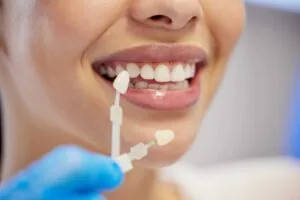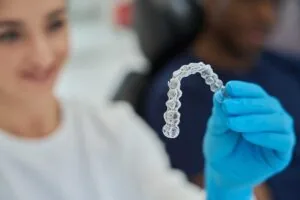Full-mouth restoration with periodontal treatment, bridgework and veneers
Dr A treated a patient with severe dental neglect, restoring her gums and teeth for a full smile makeover that boosted her confidence.
Teeth whitening is one of the most straightforward and accessible forms of cosmetic dentistry. However, it must be understood that many of us need more formal training. But what if we could make the process predictable and consistently deliver the exact results our patients desire while prioritising their comfort? Achieving that would undoubtedly establish you as a skilled cosmetic dentist with an excellent reputation.
Discuss early on what the patient is looking for in a result. Use shade tabs and show them on their teeth with mirrors and photos. Can you realistically achieve what they’re looking for? This must be discussed before you start to avoid a disappointed patient later.

Every system will have limitations. Understand your system’s level of sensitivity after trying it on yourself, staff and patients, and incorporate that into your discussion at the start with each patient. Get a whitening history from your patients to be aware of what their experience has been like before if they have whitened previously. Ask about cold sensitivity, what type of toothpaste they use, and why. It’s all part of the detective work needed.
Depending on what will suit your patients best, you may need more than one whitening system. Price isn’t the only factor when choosing a whitening product; results and comfort matter just as much.
If patients already use sensitivity toothpaste, do you need to trial a night-time gel first, or will they need a daytime whitening system instead? Trial phases for a few days beforehand on low concentrations give you and your patients great peace of mind and build their confidence in you.

Ignore the traditional time scales and do your own. In the US, typical whitening lengths can take 6-8 weeks to achieve the whiter finishes. The days of two-week whitening are disappearing, and patients are looking for whiter and brighter results, but that needs time. Tailor your results accordingly.
No whitening treatment is complete without recommendations for maintaining the results and post-op instructions that are tailored to each case. If patients are happy with the results, they will keep coming back to you for life.
We are using peroxides, so understand that the damage is very limited, but it still exists. With the legal concentrations we use in the UK, we can control this superbly, but higher concentrations can cause more permanent damage, so be aware of non-official UK products.
This will have a detrimental effect on your night-time whitening treatments, as the patients won’t be able to keep their trays in, and the gels will definitely become diluted. Consider a daytime whitening system, and expect sensitivity, too.
Please get in touch using the form below.